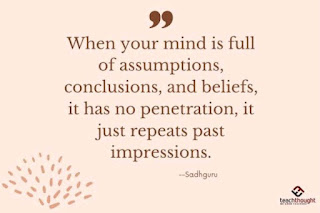The above clip depicts what was said by Charlie Munger about the human mind being like the human egg.
The following is a LinkedIn discussion with Amy Rheault-Heafield, M.Ed.
Amy Rheault-Heafield
The reality is that 1 in 5 students are dyslexic. Dyslexia encompasses many realms and is a language-based disorder. You cannot “identify” a dyslexic student at first glance or even on a city or rural street. However, once you interact and also analyze written/oral/ and reading behaviors, the evidence to suspect this exists in a student becomes much clearer. Pandemic learning loss is not the same as dyslexia or even being slow to develop reading/writing/language skills.
My comment:
The 20% (1 in 5) she mentions is what has been propagated by dyslexia advocates for decades. A majority of these kids are shut-down kids who disengage from learning to read due to wrong instruction. I have written extensively about this in my blog.
Can it be a language-based disorder when many kids around the world can read in many so-called transparent languages? Many of my students could read in Malay and Hanyu Pinyin. There are many cases of kids being able to read in Finnish, Italian, Japanese and Spanish but unable to read in English. It would be more correctly called English language problem instead of language based disorder.
Yes, these kids’ minds are wired differently and they are unable to accept anything that makes no sense. But to say that this is why they cannot learn to read is far-fetched.
As I have mentioned several times in my blog, dyslexia is a big business.
Amy Rheault-Heafield
Dyslexia is a complex language disorder. There is substantial evidence about the condition. I have been involved with educating students since 1993. Dyslexic students have always been in classrooms, schools and society in every culture and land. These are the bright students who cannot often read the code they are surrounded by. Dyslexic students often have trouble with directionality, sequencing and written/oral organization. Orton Gillingham methods continue to be the primary and best way to instruct. A mix of many approaches must also be incorporated. Check out The Landmark School/Manchester-By-The Sea…..and International Dyslexia Organization.
My comment:
It cannot be a language disorder when these so-called dyslexic kids are able to read in other languages. This statement that it is a language disorder is ironically repeated mostly by those who read only in one language.
Yes, the students who came to me for tuition are all bright students who could not read in English. My first student could not read a single sentence after 2 years of schooling.
I have written about my students who had problems tying shoe laces, not being able to tell time on a clock, directionality, sequencing, etc.
Would I dare say that a particular method is the best without having tested the rest? Of course not.
What we assume to be Knowledge such as assumptions, unquestioned beliefs, biases and opinions confused as truths can be fallacious.
Flawed opinions create illusions of ‘I know’ which blocks our ability to think.
A mind full of ideas, knowledge and experience cannot perceive the truth.

No comments:
Post a Comment